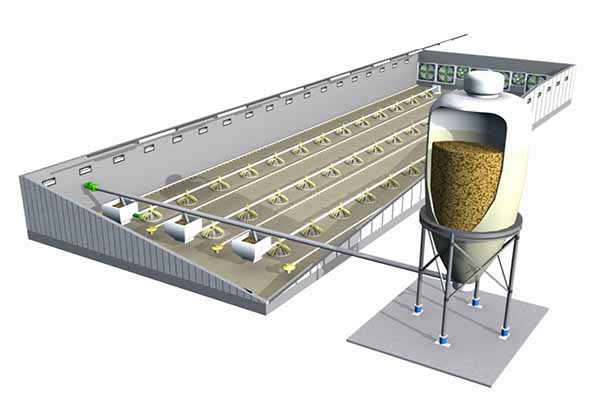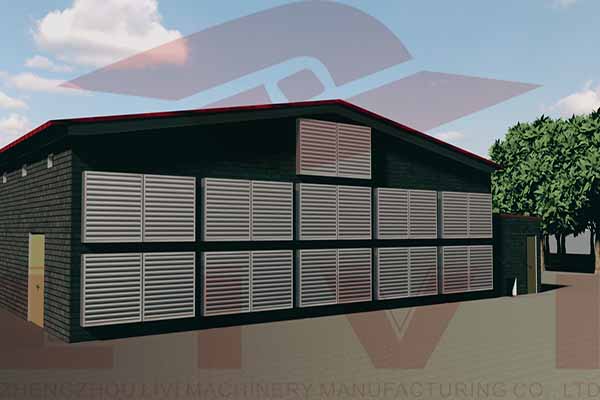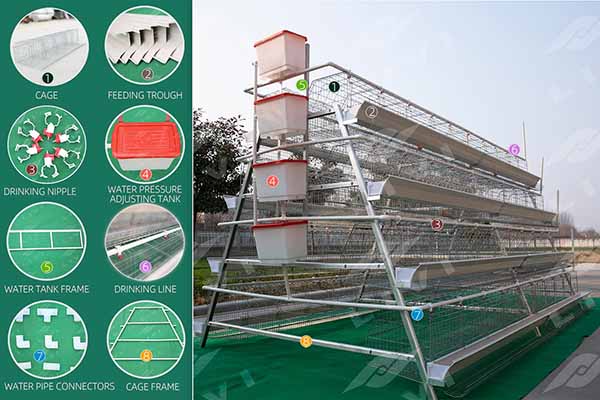Comparison of Automated Transformation of Kenyan Chicken Farms: Before and After
Time : 2025-06-26
Kenya’s poultry industry has witnessed significant growth over the years, with chicken farming becoming a vital component of the country’s agricultural landscape. The adoption of automated systems in chicken farming has been a game-changer, transforming traditional methods and enhancing productivity. This article aims to provide a comprehensive comparison of Kenyan chicken farms before and after the integration of automated systems, focusing on various aspects such as equipment, efficiency, and sustainability.

Introduction to Automated Chicken Farming
Automated chicken farming refers to the use of technology and machinery to streamline the farming process. This approach includes the use of automated feeders, waterers, lighting systems, and monitoring devices to ensure optimal conditions for the chickens. The objective is to improve efficiency, reduce labor costs, and enhance the overall health and well-being of the chickens.
Before the Automated Transformation
Before the advent of automated systems, Kenyan chicken farms relied heavily on manual labor. The process involved feeding, watering, cleaning, and monitoring the chickens manually. This traditional method was time-consuming, labor-intensive, and prone to errors. The lack of precise control over environmental factors such as temperature, humidity, and lighting often led to poor chicken health and low productivity.
Challenges Faced
- Manual Labor Intensive: The heavy reliance on manual labor made it difficult to scale up operations and limited the number of chickens that could be raised.
- Inconsistent Environmental Control: The inability to maintain consistent environmental conditions led to increased mortality rates and poor growth rates.
- Lack of Monitoring: Without proper monitoring systems, it was challenging to detect health issues early, resulting in higher treatment costs and lower profits.
The Automated Transformation
The integration of automated systems has revolutionized the way chicken farming is conducted in Kenya. The transformation has brought about several key changes, including improved efficiency, better health outcomes for the chickens, and increased profitability for farmers.

Automated Feeding Systems
Automated feeders have replaced the traditional method of hand-feeding. These systems dispense feed at predetermined intervals, ensuring that the chickens receive the right amount of nutrition at the right time. This not only saves time but also reduces the risk of overfeeding or underfeeding, which can lead to health problems.
Automated Watering Systems
Similar to feeders, automated watering systems provide chickens with a constant supply of fresh water. These systems are designed to prevent contamination and ensure that the chickens have access to water at all times, which is crucial for their health and productivity.
Environmental Control Systems
Automated environmental control systems maintain optimal conditions for the chickens by regulating temperature, humidity, and lighting. These systems use sensors to monitor the environment and adjust the settings as needed, ensuring that the chickens are always in a comfortable and healthy environment.
Monitoring and Data Analysis
Modern automated systems are equipped with monitoring devices that collect data on various parameters such as feed consumption, water intake, and health indicators. This data can be analyzed to identify trends, predict future needs, and make informed decisions to improve the farm’s performance.
monitoring devices that collect data on various parameters such as feed consumption, water intake, and health indicators. This data can be analyzed to identify trends, predict future needs, and make informed decisions to improve the farm’s performance.
Results and Benefits
The automated transformation of Kenyan chicken farms has yielded several positive outcomes:
- Increased Productivity: Automated systems have significantly improved the efficiency of chicken farming operations, allowing farmers to raise more chickens in less time.
- Enhanced Chicken Health: The precise control over environmental conditions and timely feeding and watering have led to healthier chickens and lower mortality rates.
- Cost Reduction: By reducing the need for manual labor and minimizing waste, automated systems have helped farmers cut costs and increase profits.
- Sustainability: The use of automated systems contributes to a more sustainable approach to chicken farming by reducing the carbon footprint and minimizing the use of resources.
Conclusion
The automated transformation of Kenyan chicken farms has been a significant step forward in the industry. The integration of advanced technology has not only improved the efficiency and profitability of chicken farming but has also enhanced the well-being of the chickens. As the industry continues to evolve, it is crucial for farmers to embrace these advancements to stay competitive and sustainable in the long term.











